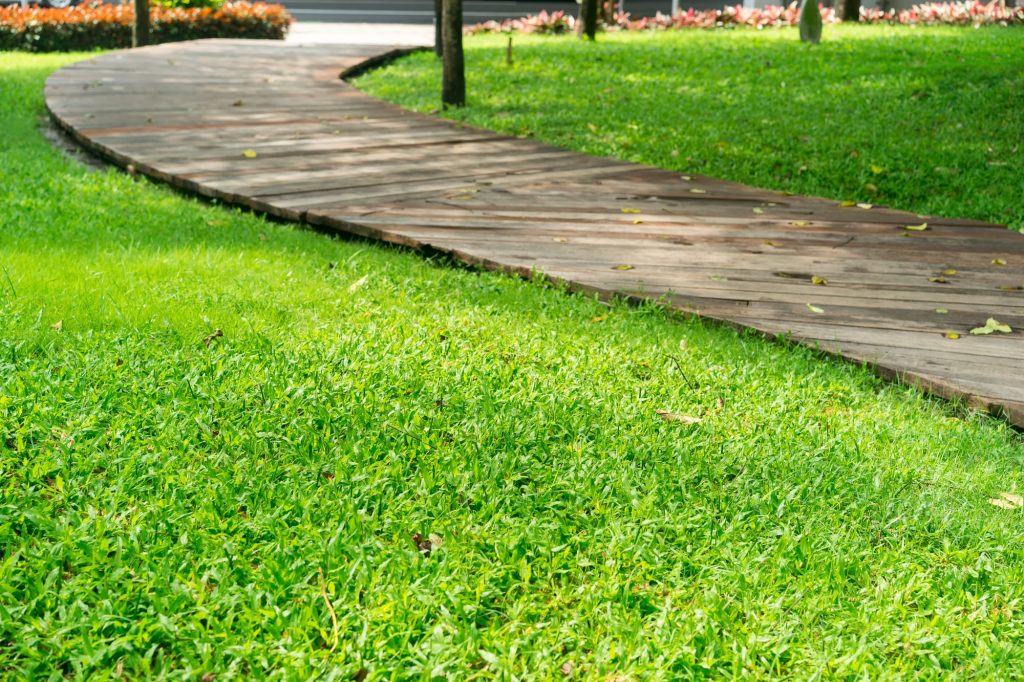Garden edging is an important part of creating a beautiful and functional outdoor space. It can help define areas of your garden, prevent grass and weeds from encroaching on your flower beds, and add a decorative element to your landscaping. Here are some popular garden edging options to consider:
- Stone edging: Stone edging, such as cobblestone or limestone, can create a natural and rustic look in your garden. It’s durable and low-maintenance, but can be more expensive than other options.
- Brick edging: Brick edging is a classic and versatile option for garden edging. It comes in a variety of colors and styles, and can be laid in a variety of patterns. However, it can be more expensive than other options and may require professional installation.
- Metal edging: Metal edging, such as aluminum or steel, is a modern and sleek option for garden edging. It’s durable and easy to install, but may require occasional maintenance to prevent rusting.
- Wood edging: Wood edging, such as cedar or redwood, can create a warm and natural look in your garden. It’s easy to install and can be customized to fit your outdoor space. However, it may require regular maintenance to prevent rotting and warping.
- Plastic edging: Plastic edging is a cost-effective and easy-to-install option for garden edging. It comes in a variety of colors and styles, and can be shaped to fit the contours of your garden. However, it may not be as durable as other options and can become brittle over time.
When choosing garden edging, consider the style of your home and the overall aesthetic of your outdoor space. You’ll also want to consider the durability and maintenance requirements of each material.
Garden Edging: Adding Plants for a Pop of Color
In addition to creating defined spaces in your landscape, garden edging can also be a great opportunity to add plants for a pop of color and texture. Here are some popular options to consider:
- Ground covers: Low-growing ground covers, such as creeping thyme or moss, can be planted along the edges of your garden beds to soften the edges and add a burst of color.
- Annuals: Annual flowers, such as marigolds or petunias, can be planted along your garden edging for a colorful display that changes each season.
- Perennials: Perennial flowers, such as hostas or daylilies, can be planted along your garden edging for long-lasting color and interest.
- Herbs: Herbs, such as basil or lavender, can be planted along your garden edging for both beauty and practicality. They can add a fragrant aroma to your outdoor space and can be harvested for use in cooking.
When adding plants to your garden edging, consider the amount of sunlight and water the area receives. You’ll also want to choose plants that are appropriate for your climate and soil type. With the right plants and materials, garden edging can be both functional and beautiful in your landscaping.
5 Low-Maintenance Plants for Your Outdoor Space
If you’re looking to add some greenery to your outdoor space but don’t want the added maintenance, here are five low-maintenance plants to consider:
- Succulents: Succulents are a popular choice for low-maintenance landscaping. They come in a variety of shapes and sizes and require minimal watering and care. They can be planted in pots or in the ground and are perfect for adding a pop of color to your outdoor space.
- Lavender: Lavender is a fragrant and easy-to-grow plant that’s perfect for adding some beauty to your garden. It requires minimal watering and pruning, and is a natural insect repellent.
- Hostas: Hostas are a low-maintenance plant that are perfect for adding some greenery to shady areas of your outdoor space. They require minimal watering and can be left alone for years without needing to be divided.
- Daylilies: Daylilies are a hardy and easy-to-grow plant that comes in a variety of colors. They require minimal watering and care, and can thrive in both full sun and partial shade.
- Ornamental grasses: Ornamental grasses, such as fountain grass or blue fescue, are a low-maintenance option for adding texture and movement to your outdoor space. They require minimal watering and care, and can be left alone for years without needing to be divided.
When choosing low-maintenance plants for your outdoor space, consider the amount of sunlight and water the area receives. You’ll also want to choose plants that are appropriate for your climate and soil type. With the right plants and minimal care, you can create a beautiful and low-maintenance outdoor space.

